Set up automations for other users
Technology plays a significant role in our daily lives in our rapidly changing world. While one of Pipedrive’s primary goals is to build an easy-to-use and intuitive tool, not everyone is well-versed in technology and may require assistance setting up certain features.
The option to share automations with other users aims to help tech-savvy admins save time by setting up automations for less experienced users.

Share automations with others
Before sharing an automation, you need to keep in mind that only automations with the trigger ”Triggered by selected users” can be shared. If the trigger ”Triggered by anyone” is set, sharing isn't needed as all users are already included.
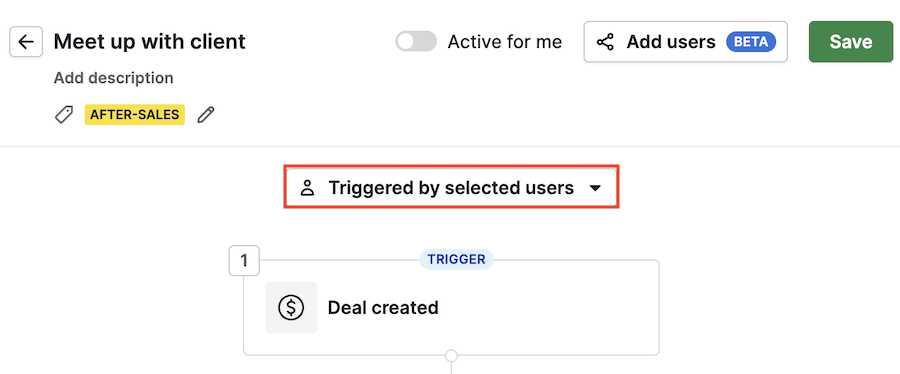
To give access to an automation to other users in your company, click on the automation itself to open the contextual view. Then, on the users section, click on ”Add users”.
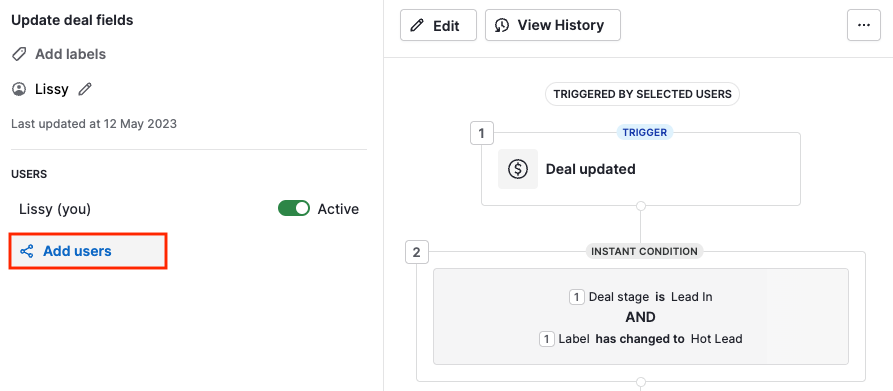
You will see the manage access prompt. Look for the users you want to share the automation with and click ”Apply the changes”.
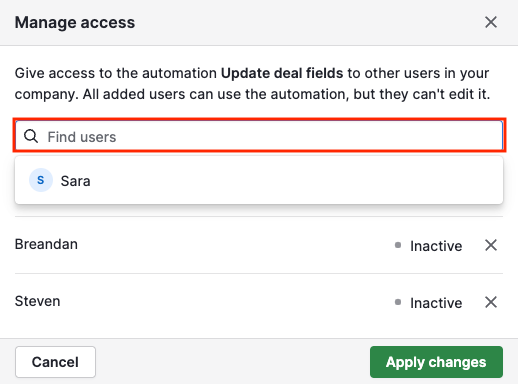
Once you save the changes, you’ll see that the users section in the contextual view will now have a list of users with access to the automation.
By clicking ”Manage access” you can add more users or remove the access from existing ones.
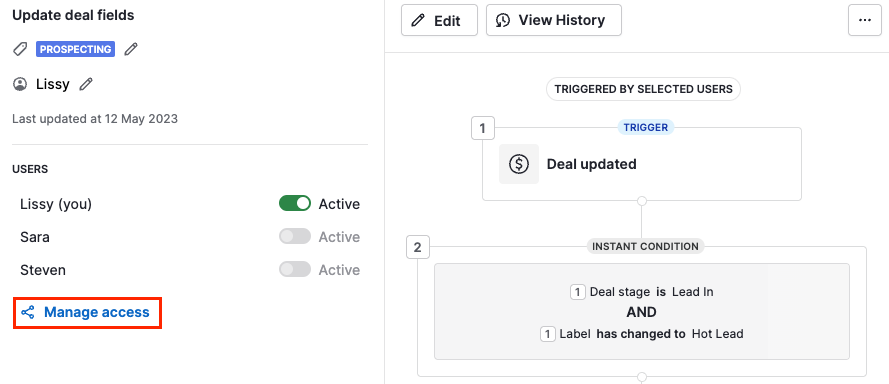
In the automations list view you’ll be able to see the automations that have been shared and are enabled or disabled. The sharing icon has two numbers:

- The first number indicates how many users have already activated the automation
- The second number indicates how many users the automation was shared with
Activate shared automations
Since automations shared with others will execute actions on their behalf (i.e., send emails, send Slack messages, etc.), the subscribed users need to agree to enable the automation for themselves and agree to any future changes made, as they won’t be alerted.

Once users activate the automations on their end, you’ll see the ”Active” toggle enabled in the users section.
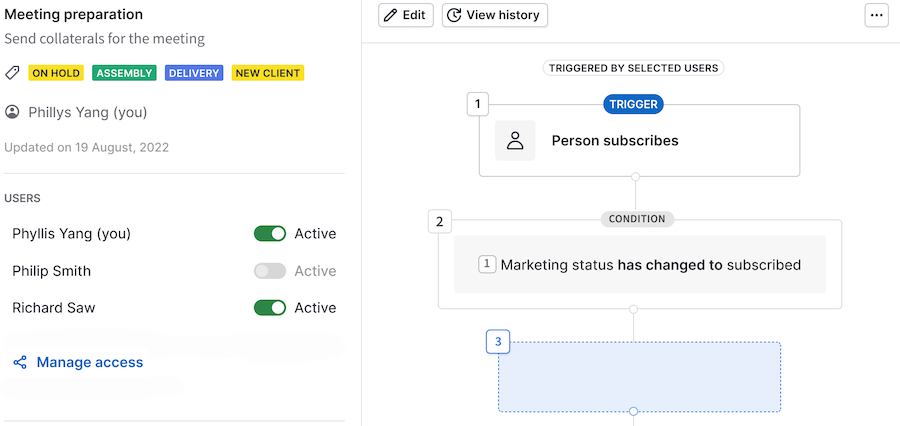
Regular users that received and activated the automations will be able to see the workflow and the executions by their own user. However, they won’t be able to edit, transfer, delete or duplicate the automation, as these actions will only be limited to global admins.
If needed, admins can temporarily or permanently remove users from automations. If the removal is temporary, the regular user will need to activate the automation themselves again to resume executions.
Execution history
Admin users
Admin users have access to the full execution history of a shared automation. They can:
- Filter by user
- Look for specific executions by specific users
- Select the timeframe
- Check the status of an execution
Regular users
Regular users will be able to see all the information related to their own executions, such as status and timeframe.
Troubleshooting
When an automation is activated, the system will run a diagnosis to confirm that the workflow is built correctly and no issues will prevent it from execution.
If an error is found, you’ll be notified and you’ll need to review the workflow in order to enable it.
Click ”Troubleshoot” at the top of the page for more details about the errors.
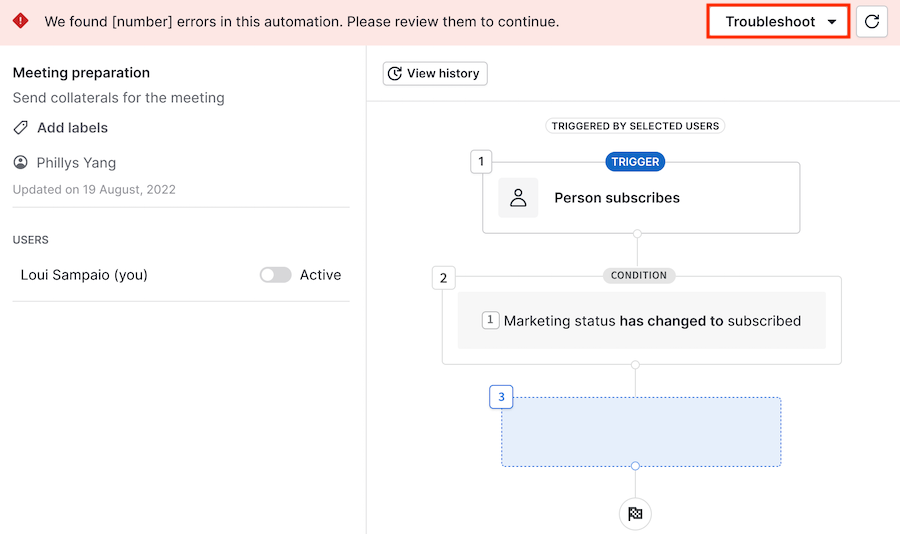
Once the issues have been addressed, you can run the diagnosis again and activate the automation.
Was this article helpful?
Yes
No